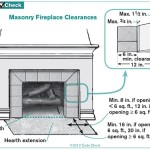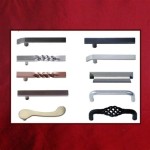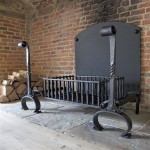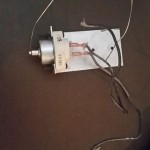Best Wood Burning Fireplace Insert Reviews: Finding the Right Fit for Your Home
A wood burning fireplace insert offers an efficient and aesthetically pleasing way to heat a home. Unlike traditional open fireplaces, inserts are designed to fit directly into an existing fireplace opening, providing increased heating efficiency and reduced emissions. Choosing the best wood burning fireplace insert requires careful consideration of factors such as heating capacity, size, efficiency ratings, and installation requirements. This article examines several highly-rated models, focusing on their key features and performance capabilities to assist in making an informed decision.
Heating Capacity and Firebox Size
The heating capacity of a wood burning fireplace insert is generally measured in BTUs (British Thermal Units). The required BTU output depends on the area intended to be heated. For example, a smaller insert might be suitable for heating a single room, while a larger model with a higher BTU rating can effectively heat a larger open-concept living space. It is important to accurately assess the square footage of the area to be heated and select an insert with an appropriate BTU rating to ensure optimal performance. Undersized inserts will struggle to provide adequate heat, while oversized inserts may lead to overheating and discomfort.
Associated with heating capacity is the firebox size. A larger firebox allows for larger logs, which can extend burn times and reduce the frequency of reloading. However, a larger firebox also requires more wood to reach optimal operating temperatures. The ideal firebox size is a balance between heating needs and convenience. Some inserts feature a catalytic combustor, which further improves efficiency and reduces smoke output by burning off gases that would otherwise be released into the atmosphere. This technology increases the overall heat output and reduces fuel consumption compared to non-catalytic models.
Efficiency and Emissions Standards
Efficiency is a critical factor when selecting a wood burning fireplace insert. An efficient insert will extract more heat from the wood burned, resulting in lower fuel costs and reduced environmental impact. Efficiency is often expressed as a percentage; a higher percentage indicates greater efficiency. Consider models with an efficiency rating of 75% or higher for optimal performance.
Beyond efficiency, emissions standards are also crucial. The Environmental Protection Agency (EPA) sets limits on the amount of particulate matter that wood burning appliances can release. Choosing an EPA-certified insert ensures that the appliance meets stringent emissions standards, contributing to cleaner air quality. EPA-certified inserts are designed to burn wood more completely, reducing the amount of smoke and pollutants released into the atmosphere. Regularly inspecting and maintaining the insert, including proper chimney cleaning, is essential for optimal performance and minimal emissions.
Furthermore, the type of wood burned significantly impacts efficiency and emissions. Seasoned hardwood, which has been dried for at least six months, burns hotter and cleaner than green or unseasoned wood. Burning only seasoned hardwood will maximize the efficiency of the insert and minimize smoke production.
Installation Considerations and Features
Proper installation is paramount for the safe and efficient operation of a wood burning fireplace insert. It is generally recommended to have the insert installed by a qualified professional who is familiar with local building codes and safety regulations. The installation process typically involves connecting the insert to a chimney liner, which is designed to protect the existing chimney from the corrosive byproducts of wood combustion. The chimney liner should be sized appropriately for the insert to ensure proper draft and prevent dangerous buildup of creosote.
Beyond the core functionality, various features can enhance the usability and convenience of a wood burning fireplace insert. Some models include a blower fan, which circulates warm air into the room more effectively, improving heat distribution. Others feature a thermostat control, which allows for precise temperature regulation. Glass doors are a common feature, providing a clear view of the fire while preventing sparks and embers from escaping. The type of glass used can also impact the heat radiated and the clarity of the view of the fire.
Aesthetically, inserts are available in a range of styles and finishes to complement various home decor preferences. Choosing an insert that aesthetically matches the existing fireplace and surrounding room will ensure a cohesive and visually appealing integration. Factors such as paint color, trim design, and door style should be considered to achieve a desired aesthetic.
Finally, long-term maintenance should be considered. Regularly cleaning the glass door and internal components, as well as annual chimney inspections, are essential for maintaining the insert's performance and safety. The availability of replacement parts and customer support should also be investigated before making a purchase.

Best Wood Burning Fireplace Inserts Of 2024 Forestry Reviews

The Best Wood Fireplaces Of 2024 Direct Learning Center

Best Wood Burning Fireplace Insert With Blower Forestry Reviews

Best Wood Fireplace Inserts Fireplaces Direct Learning Center

Best Wood Burning Fireplace Insert With Blower Forestry Reviews

Best Wood Burning Fireplace Insert Reviews Top 10 2024 Inserts

The Best Wood Burning Fireplace Inserts Or Stoves Ecohome

Best Wood Burning Fireplace Insert With Blower Forestry Reviews

Dik Geurts Ivar 5 Wood Burning Stove 5kw Multifuel Via Kit Stovefitter S Warehouse

Superior Wood Burning Fireplace Review Fireplaces Direct Learning Center








